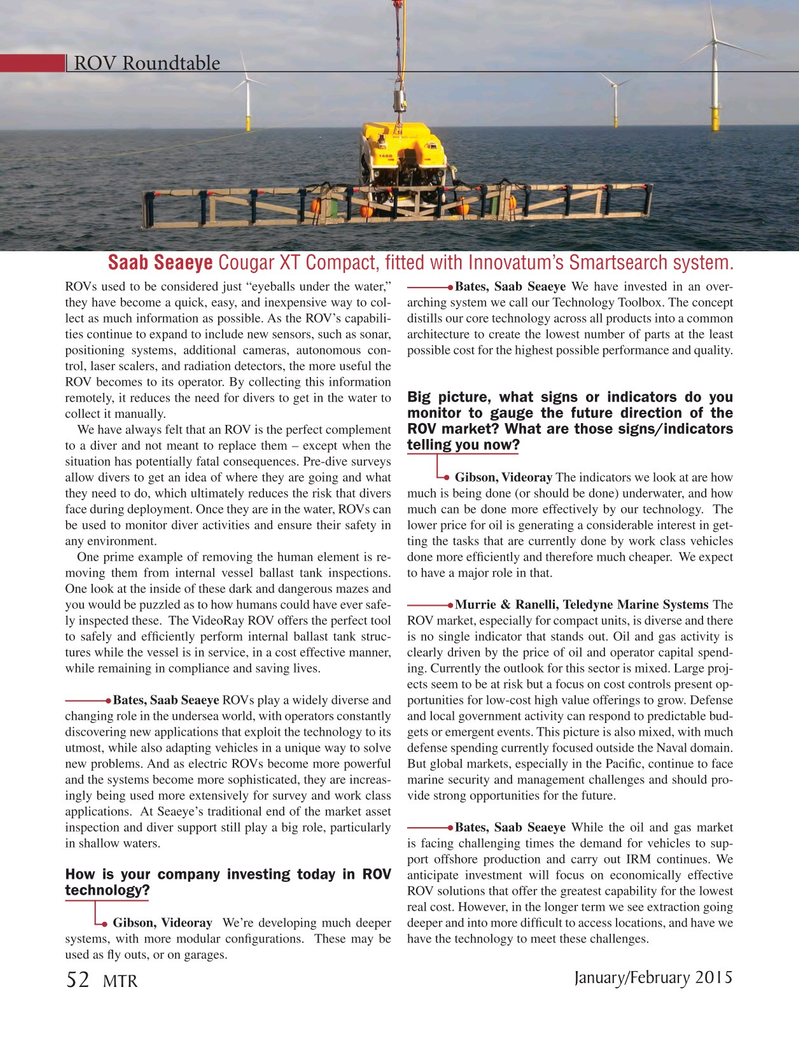
Page 52: of Marine Technology Magazine (January 2015)
Underwater Vehicle Annual: ROV, AUV, and UUVs
Read this page in Pdf, Flash or Html5 edition of January 2015 Marine Technology Magazine
ROV Roundtable
Saab Seaeye Cougar XT Compact, ? tted with Innovatum’s Smartsearch system.
ROVs used to be considered just “eyeballs under the water,” Bates, Saab Seaeye We have invested in an over- they have become a quick, easy, and inexpensive way to col- arching system we call our Technology Toolbox. The concept lect as much information as possible. As the ROV’s capabili- distills our core technology across all products into a common ties continue to expand to include new sensors, such as sonar, architecture to create the lowest number of parts at the least positioning systems, additional cameras, autonomous con- possible cost for the highest possible performance and quality.
trol, laser scalers, and radiation detectors, the more useful the
ROV becomes to its operator. By collecting this information remotely, it reduces the need for divers to get in the water to Big picture, what signs or indicators do you collect it manually. monitor to gauge the future direction of the
We have always felt that an ROV is the perfect complement ROV market? What are those signs/indicators to a diver and not meant to replace them – except when the telling you now?
situation has potentially fatal consequences. Pre-dive surveys allow divers to get an idea of where they are going and what Gibson, Videoray The indicators we look at are how they need to do, which ultimately reduces the risk that divers much is being done (or should be done) underwater, and how face during deployment. Once they are in the water, ROVs can much can be done more effectively by our technology. The be used to monitor diver activities and ensure their safety in lower price for oil is generating a considerable interest in get- any environment. ting the tasks that are currently done by work class vehicles
One prime example of removing the human element is re- done more ef

 51
51

 53
53
